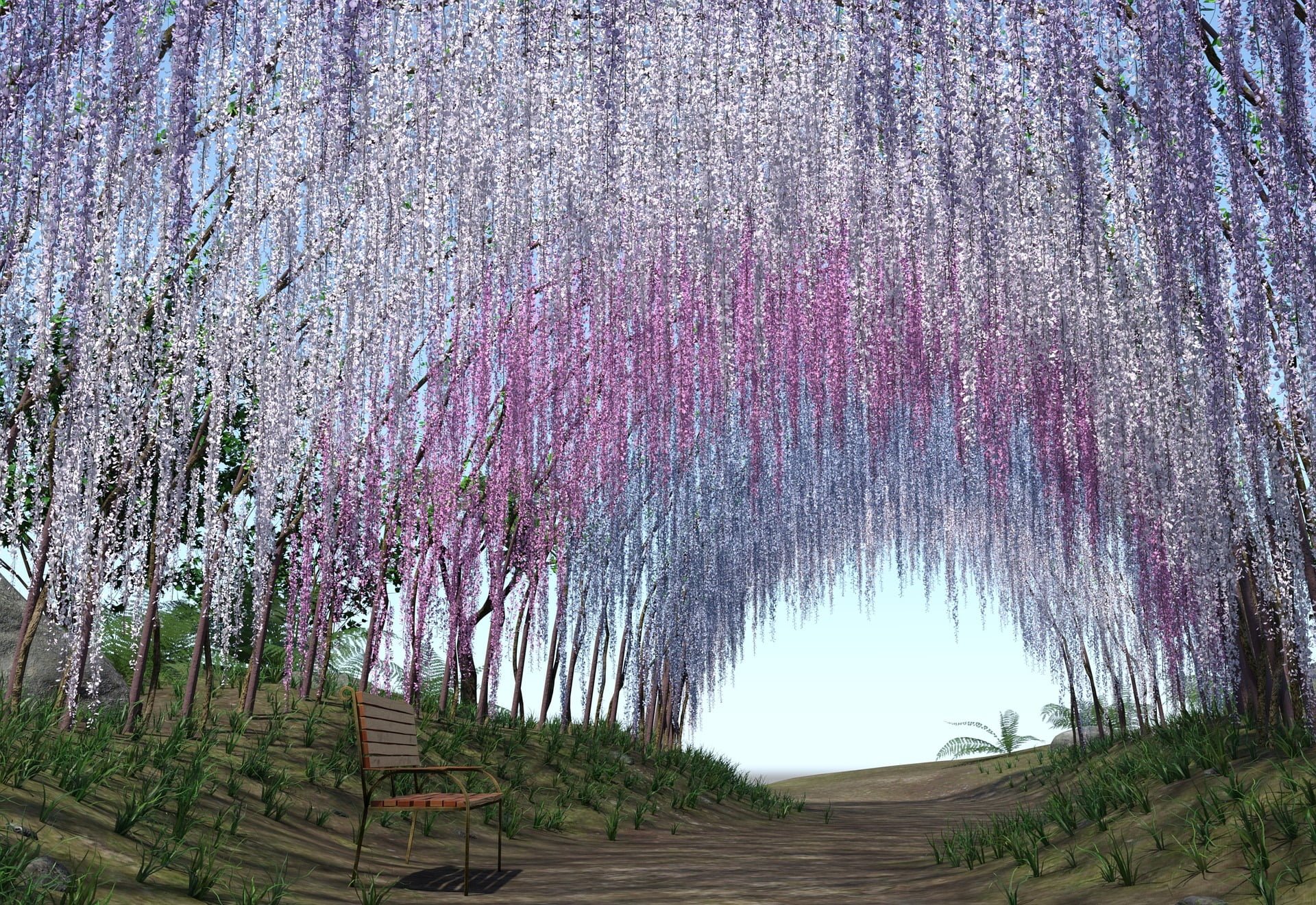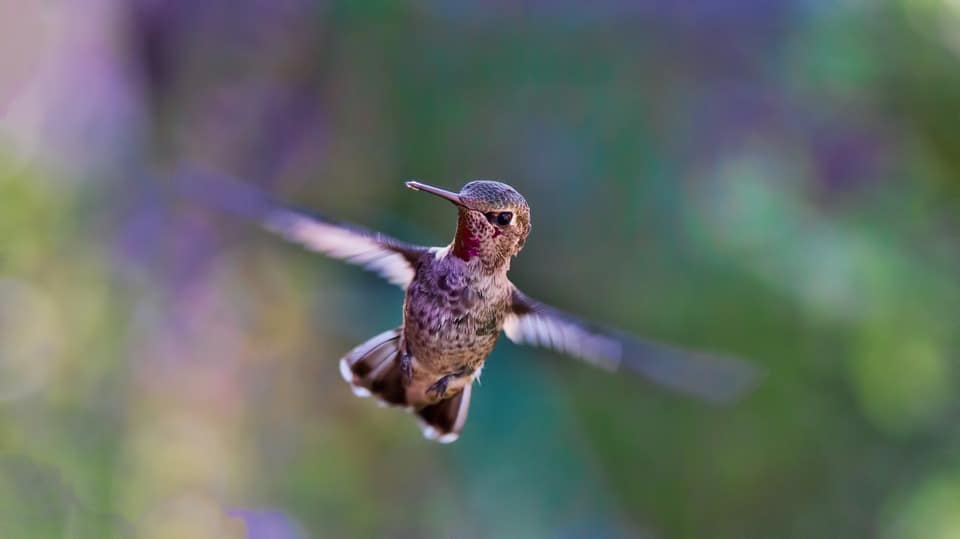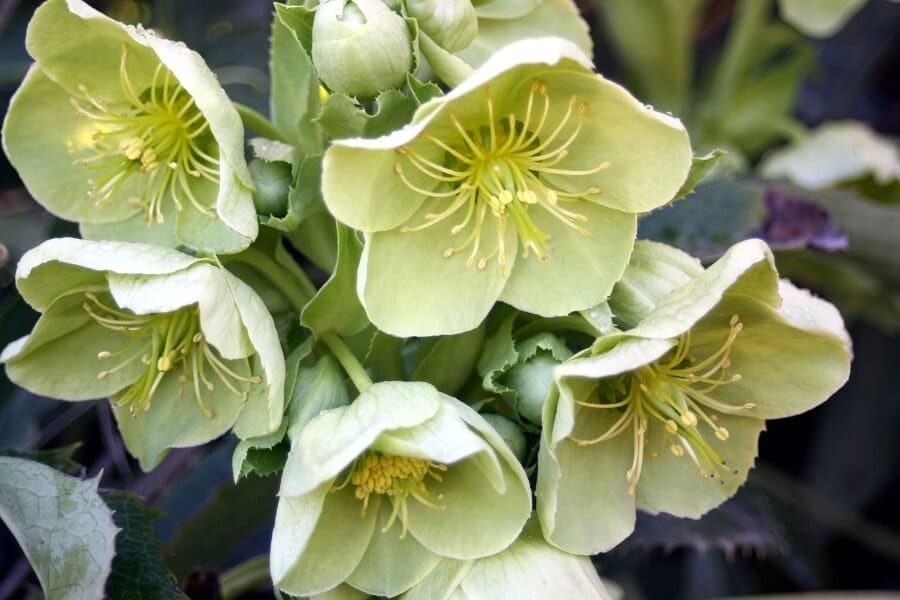Spring is the time to start getting your garden up to par. Whether spring has started, or it is on it’s way, you need to start getting started. Getting your flowerbeds weeded out and ready to go are just one of many steps. First, we should find out what we want to plant and when the right time to plant them is. There are a lot of plants that enjoy starting to grow in colder temperatures, so starting them early would be better. The wisteria vine grows well in the spring and fall.
Wisteria is a cross between a vine and a shrub, and this flower vine grows extremely quickly and forms a beautiful cascading cover for pergolas and porches. Wisteria does need a lot of care, and you should know how to keep it healthy before letting it take over your backyard.
How to Plant Wisteria

Wisteria enjoys being planted in a very fertile and moist soil. Be careful to make sure that the soil drains well so that it does not contract root rot or other stagnant water diseases. Sunshine is extremely important to the wisteria vine. The plant can grow in the shade, but it will more than likely not flower. Sunshine is essential for flower growth. Planting is to begin in the spring or fall, but planting in early spring will ensure that it has enough time to grow and flower over the areas that you wish to have some cover.
Planting from a Seed

Wisteria vines are in the same family as the pea plant, so it will come as no shock that their seeds grow in pods. To grow the plant you remove the seeds from the pods as if you were hulling pea pods. Dry the seeds and then plant them in your soil. Once they are planted do not forget to water them. You need to know that once you plant a wisteria vine seed it will take about 15 years for the vine to produce any flower or pods.
Planting Whole Wisteria Plant

If you have purchased a wisteria plant that is already well on it’s way, follow these steps. Dig a hole that is as deep as your root bundle and 2-3 times as wide. Since these plants tend to grow fast and take over a lot of space, each plant should have about 10-15 feet between them. This will give them all enough space to grow and ensure that they each get sufficient sun exposure. It is also important that you do not plant the wisteria vine close to other plants because they may get choked out by the vine. If your soil is not very fertile, be sure to spread compost before planting. It is also important that you spread at least a 2 inch thick layer of compost each spring. This will keep your soil healthy and strong for the plants that are growing in it.
Wisteria Care

Wisteria will need some TLC to stay strong and healthy. Some wisteria growers like to add phosphorus to their soil to aid in the growth of some flowers. Scratch bone meal into the soil in spring and then add some rock phosphate in the fall. This will help the wisteria flower more. If your area receives less than 1 inch of rain each week, make sure to water your plants. As a rule of thumb, the soil should be moist for 2-3 inches below the surface to be enough water for the wisteria.
Pruning Wisteria

Cutting plants back is extremely important for their health. It might seem counterproductive, but in reality cutting plants back helps the new growth come in stronger and healthier than the first. Wisteria needs pruning almost more than any other plant. Cutting the vine back is the secret to great flowering. The wisteria vine should be pruned twice a year. Prune once in July or August and again in January or February.
New Plants
If the plant is young and recently planted, be sure to prune the vine back a good amount right after it is planted. Maker sure to have a good pruning knife. The next year, prune the main stem(s) back to 3 feet of the last year’s growth. This will ensure that the stem of the vine is strong enough to support future growth. In July or August cut back the green shoots from the current year’s growth to 5 or 6 leaves. This will control the size, keeping it from gutters, and encourages it to grow new shoots and buds instead of just green leaves. In January or February cut the new growth to about 2 or 3 buds. The plant is dormant at this time and pruning it will ensure that it’s size does not become overwhelming and will keep the flowers from being obscured by leaves.
Old Plants
If you have a well-established wisteria plant then some harsher pruning will be necessary to keep it tamed. Hard pruning will also encourage strong new growth. Pruning back long branches and removing older sections of stems to just above the strong young branch is wise. Cutting the wisteria to just the main stem or even the ground may be necessary, depending on how out of control the vine is. The vision you want at the end of your hard pruning is a skeleton of well spaced branches. Be aware, hard pruning can cause your plant to only grow leaves for the next 2-3 years time. This gives the vine a chance to grow some stronger growth for the flowers to grow on later. It should also be warned that since hard pruning is to stimulate growth you should not fertilize in the following spring.
Can I Apply the Same Pruning Techniques for Wisteria as I Do for Lilacs?
When it comes to pruning lilacs for spring, it’s important to note that the same techniques may not necessarily apply to wisteria. While both plants benefit from regular pruning, wisteria requires specific methods catered to its growth pattern. Consulting gardening experts or reliable resources can provide you with the ideal pruning techniques for wisteria while ensuring its healthy and abundant blooms.
Disease

Just like humans and other plants, wisteria are able to get sick. They are an extremely strong plant and it takes a lot to harm them, but if their root system becomes tainted, then the plant will become sick.
Crown Gall
Crown gall is a common root disease that wisteria are exposed to. This bacterial infection begins in the soil. It is easy to identify crown gall because it forms round wart looking growths just above the soil line or on lower branches and stems. Crown gall makes it difficult for the plant to bring water up through the stem to the rest of the plant. Since the plant cannot get water, it becomes weak and unproductive. The bacteria can be in soil for many years and begins to grow when it is saturated with moisture. Wisteria is extremely susceptible after being pruned since the crown gall enters through fresh cuts and wounds on the vine.
Disease Protection
To keep your wisteria plants from developing crown gall be sure to avoid pruning in places that might come into contact with soil. You can remove the gall growth with a pruning knife and destroy the growth. Keep the new wound closed with pruning sealer to ensure that the crown gall does not enter the area you just removed it from. If the plant does not seem to be recovering, remove the plant and destroy it. Crown gall bacteria can persist in the soil for about two years after the plant is removed and destroyed, so be careful using that are of soil. There is also an eradicant chemical called Gallex that is recommended for treatment.
Conclusion
Wisteria vines are known for their beautiful hanging flowers and amazing smell. They are also well-known taking over gardens, growing extremely quickly, and needing a lot of care. This plant is very strong and it would take a lot to really harm it, but incorrect pruning and different diseases can cause a lot of flowering and growth issues with the vine. If you are planting one this spring, make sure that you do your research to ensure that your wisteria plant grows to be a stunning part of your garden.








